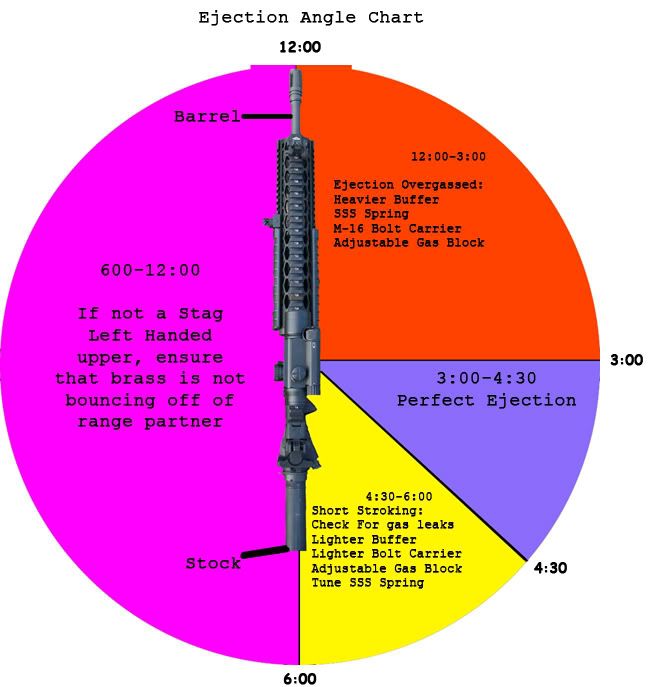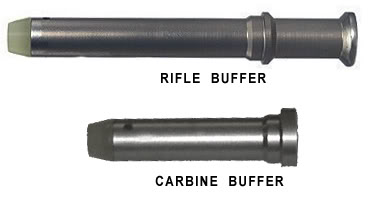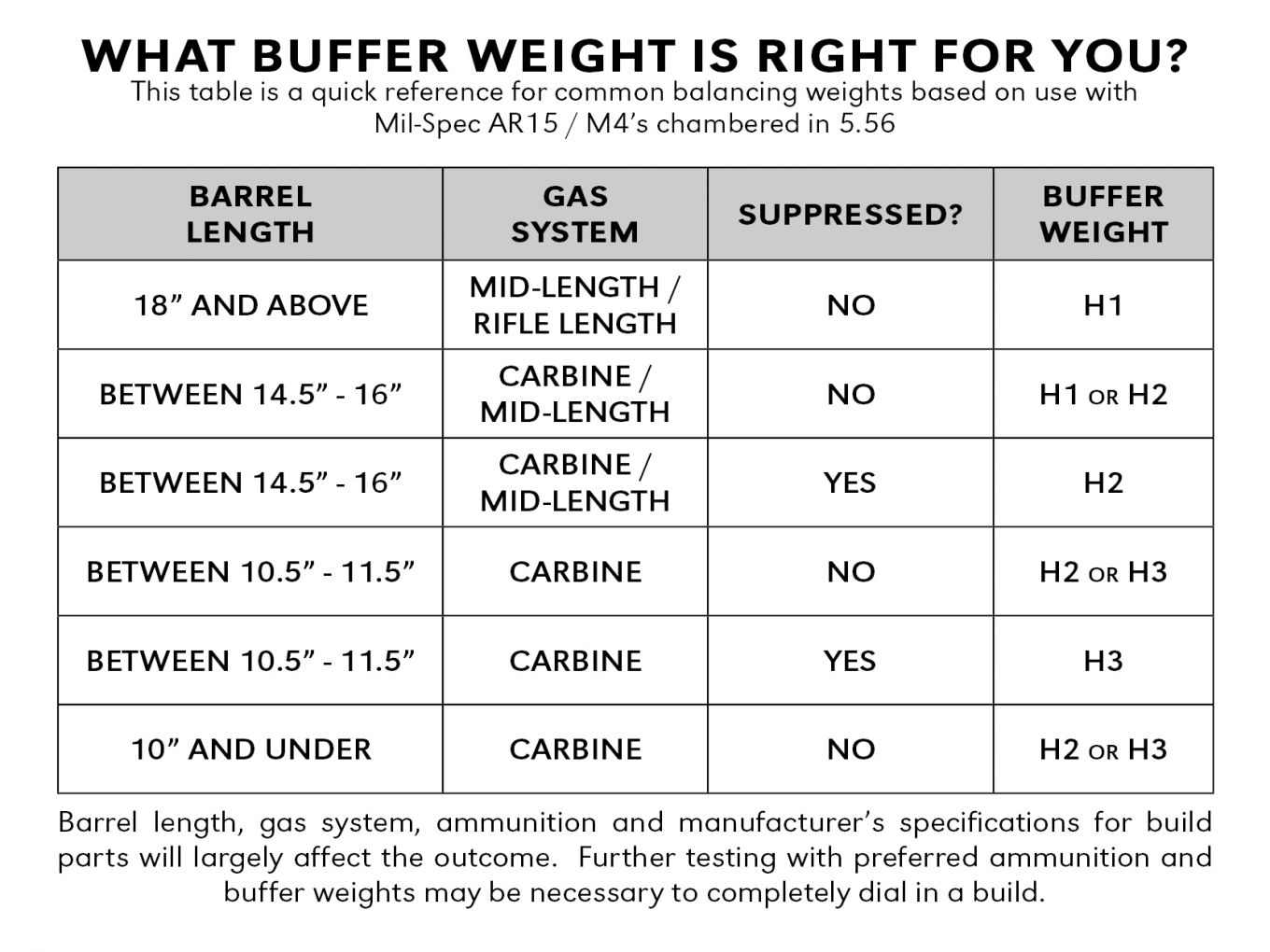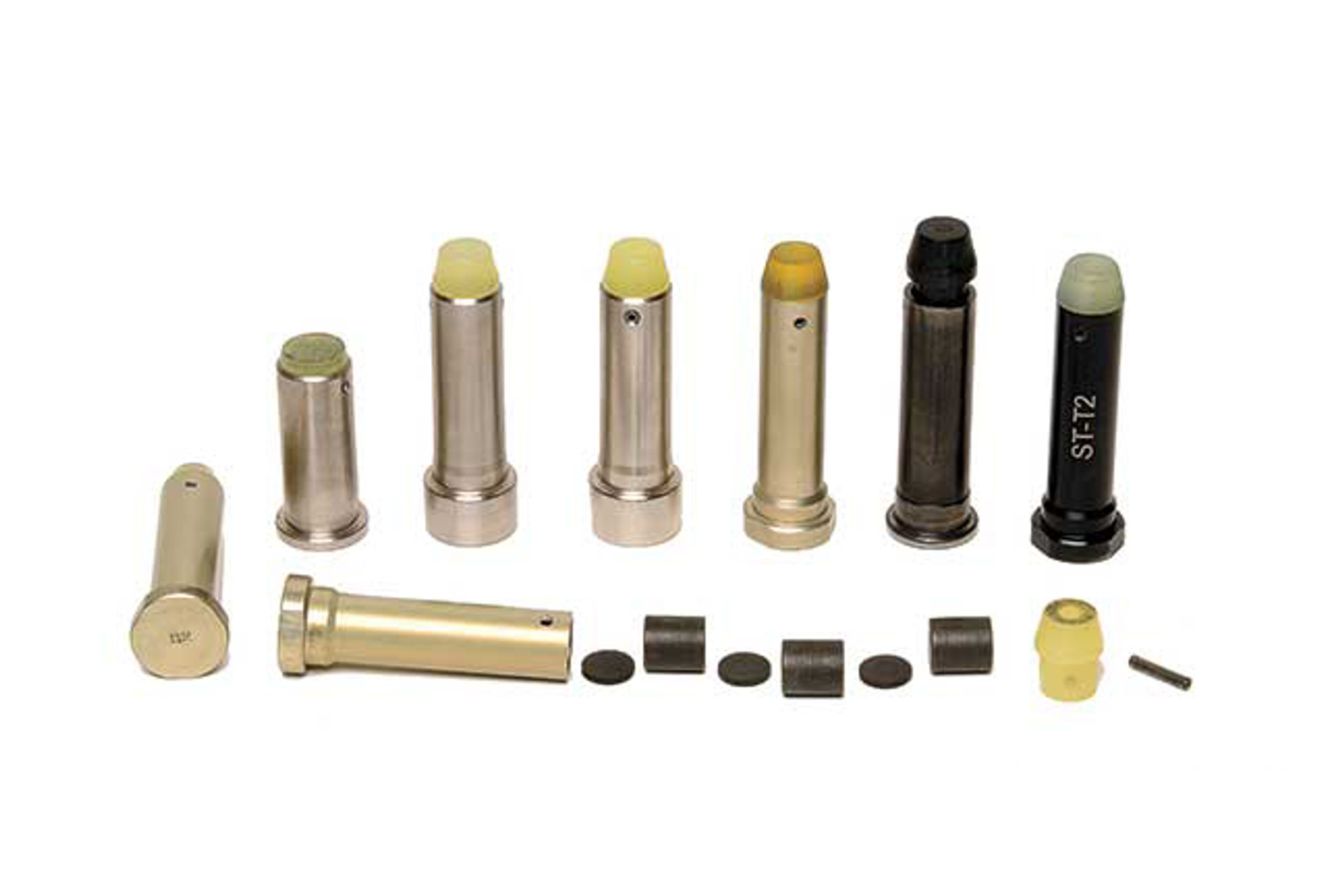AR-15 Buffer Weights: Difference Is, and How to Choose
If you're not building your own rifle's, chances are you haven't ever considered the buffer wight in your rifle. There's a good chance you've never even taken it out. However, your buffer weight, and buffer spring, are some of the most important factors not just in how reliable your weapon is, but in how nicely it shoots as well.
So, let’s talk about buffer weights. Of all the rifle components going into an 80% AR-15 build, the most overlooked is the buffer weight. Why? Because it's hidden inside the receiver extension/buffer tube. Plus, it's not as exciting to research and swap out as a new optic, muzzle device, or weapon light. Nobody can even see you spent the money, and we all know looking cool is what actually matters.
How Does a Buffer Weight Work?
By now, you should be familiar with AR-15 gas systems. Gas pressure is forced up a gas port in the barrel, down a gas tube, and into the gas key in the bolt-carrier group (BCG), to push the BCG rearwards, extracting the fired round.
The buffer & buffer spring is what it's pushing into, and what returns the BCG forward, stripping and loading the next round. Of all the parts in the AR15, this is about the simplest. It's a spring and weight combination, that until the past 20 years, went largely unchanged. The military has their set weights for the carbines & rifles, and it wasn't until the civilian market started playing around with different buffer weights & spring tensions that people even started talking about this more.
Why Change Them?
Assuming reliability isn't one of your current struggles (rifles are typically test-fired before they leave the factory), there's still a variety of reasons you might want to change out the buffer weight. Most commonly is recoil management, and reducing gas-blowback. If your rifle is properly tuned, you'll be taking less gas to the face, and the muzzle will be staying flatter through the recoil cycle, as the violence of the action is managed. This also helps increase lifespan of internal parts by reducing excess wear.
In short, you get a rifle that you can shoot better, and last longer, just by tuning a few weights Whats not to love?
Choosing a Buffer Weight for an AR-15

This chart provides a good reference for how tuned your rifle is
If you have ever heard of someone "tuning" a rifle, altering the buffer weight and springs is how seasoned firearm builders accomplish this task. The gas port in your barrel is fixed, and while adjustable gas blocks exist, the majority of tuning is going to lie in your buffer system.
With a heavier buffer weight, the BCG encounters more resistance rearwards. The entire action becomes smoother, especially the felt recoil. But an overly heavy buffer isn’t good for a rifle, either. It will prevent the AR-15 from cycling, leading to improper extraction and ejection.
A good rule of thumb is to find a buffer weight that allows your rifle to lock back on an empty magazine every time. Load a single round, and check to make sure it locks back several times in a row. Does it? Step up the weight a little bit. Not locking back, or running into other malfunctions? Drop the weight down one, and check again.
Common Buffer Weights

First, make sure you have the right size. There's a 90% chance you need a carbine size these days.
- Carbine Buffer — 3 oz.
- For a carbine-length rifle, 3 oz. proves useful with associated gas systems and various supported ammunition types.
- Heavy (H) Buffer — 3.8 oz.
- There is a wide range of heavy buffers available, starting with the 3.8 oz. model that proves effective for rifles experiencing erratic extraction.
- H2 Buffer — 4.6–4.7 oz.
- The second tier of heavy buffers is ideal for mid-length gas systems, though it’s common to find up to 4.7 oz buffer weights in pistol builds with under 16-inch barrels to reduce violent cycling. If you fire 5.56 NATO, a tier 2 buffer weight is ideal.
- H3 Buffer — 5.0–5.4 oz.
- If your AR platform fires 7.62x39, .300 AAC, or even .50 Beowulf, the heaviest buffer weight is your go-to, as it will help reduce the recoil and cycle the larger rounds.
- Pistol Buffer — 5.0–8.5 oz.
- You would think a pistol caliber build, which uses smaller rounds overall, would require a lighter buffer weight. The opposite is true, though. In a pistol caliber build, the traditional gas system of an AR is missing outright. Furthermore, the bolt carrier group is typically heavier. To smooth the action and ensure reliability, a larger buffer weight is a must-have.
Specialty Buffer Weights
Of course, for those of us who are extra-neurotic about peak performance, there are also even more specialized buffer systems. Just like with anything else on the AR15, it all comes depends on how far down the rabbit hole you want to go.
- Spike's Intermediate Weights
- Looking to tune even more precisely? Spikes offers buffer weights that are in-between the standard H1/H2/H3 weights.
- Geissele Super 42
- Designed for DEVGRU to have extremely long-lasting springs, these braided wires also eleminate the "twang" sound some complain about from stock buffer springs.
- JP Silent Capture
- JP offers a self-contained buffer system targeted towards competition shooters, allowing you to tune for your specific rifle.
- Sprinco Springs
- No article on buffers would be complete without including Sprinco, out of Texas. While they don't make buffer weights, their buffer springs are the OGs on the buffer world. They were truly the first to start altering weights, and their springs are some of the longest lasting available.
How do I decide what to go with?

This chart provides a great reference point to start at
Of all the modifications you can make to your AR-15, the buffer is likely to be one of the last modifications you make, and for good reasons. Optics, lights, and better triggers are all going to more significantly improve the way your rifle shoots than your buffer.
Of course, that being said, it's not something that should go neglected either. A finely tuned rifle really is a different shooting experience than a budget build, and protecting the lifespan of your parts is important as well (especially in shorter-barreled gun).
It's going to come down to how serious you want to get. Most people are going throw an H2 buffer in their gun and call it a day. However if you're anything like me, you may very well end up with a closet full of weights & springs to tune every build to optimum performance...



 Back to List
Back to List